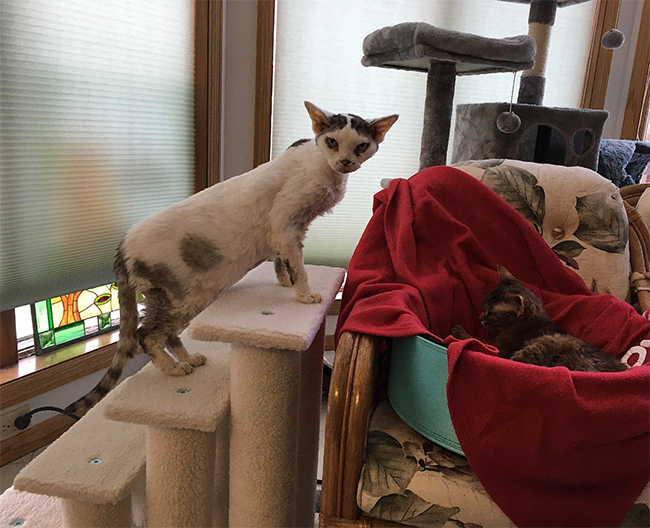The Feline Veterinary Medical Association (FelineVMA)* and The International Association for Animal Hospice and Palliative Care (IAAHPC) have released the 2023 AAFP/IAAHPC Feline Hospice and Palliative Care Guidelines.

These Guidelines focus on the evolving field of feline hospice and palliative care, emphasizing communication, ethics, and individualized care. They highlight the importance of comfort care and emotional wellbeing, recognizing the link between physical, psychological, and social needs of the patient. A further concept of the ‘unit of care’ is introduced, which is extrapolated from human hospice and palliative care, and encourages a collaboration between other members of the interdisciplinary team to support the caregiver and their needs.
“I am pleased that the AAFP and IAAHPC collaborated on these Guidelines, which underscore the importance of providing the best possible care and support for our feline companions as they approach the end of their lives,” stated Diane R. Eigner, VMD, MBA, CVPM, CHPV, CFV, Task Force Co-Chair. “These Guidelines emphasize the need for empathy, kindness, and understanding during this challenging time for both cats and their human caregivers.”
These Guidelines review and focus attention on:
- A comprehensive, five-step care plan that allows for tailoring the approach to both the cat and the family involved in the care;
- A discussion about communication and caregiver preferences, relationship-centered care, and guiding the caregiver through the consultation;
- Establishing ‘budgets of care,’ which is a concept that greatly influences what can be done for the individual cat by establishing what is reasonable, practical, and ethical;
- A discussion about the ‘unit of care ‘ concept derived from human hospice practices, which, rather than the cat being the sole focus of care, includes caregivers and their needs;
- Ethical considerations, including a decision-making framework;
- Emphasis on the importance of comfort care, and the latest information available about how to assess the quality of a cat’s life;
- Assessment of the cat’s emotional health, meeting the individual cat’s essential needs, and environmental modification; and
- Nutrition and hydration management.
“These Guidelines provide a comprehensive summary about how to approach and support the needs of both the cat and caregiver,” shares Katrina Breitreiter, DVM, DABVP (Feline), Task Force Co-chair. “This is a valuable resource to any veterinary professional that treats cats in their practice.”
Accompanying the Guidelines are several supplemental materials which include a new educational brochure for cat caregivers, video, and a hospice and palliative care patient questionnaire.
The Task Force included Diane R Eigner, VMD, MBA, CVPM, CHPV, CFV, (Co-chair); Katrina Breitreiter, DVM, DABVP (Feline), (Co-chair); Tyler Carmack, DVM, CVA, CVFT, CHPV, CTPEP; Shea Cox, DVM, CVPP, CHPV; Robin Downing, DVM, MS (Bioethics), DBe, DAAPM, DACVSMR; Sheilah Robertson, BVMS (Hons), PhD, DACVAA, DECVAA, DACAW, DECAWBM (AWSEL), CVA, MRCVS; and Ilona Rodan, DVM, DABVP (Feline).
The Guidelines development was supported by an educational grant to the FelineVMA from:

*Previously known as the American Association of Feline Practitioners (AAFP)
